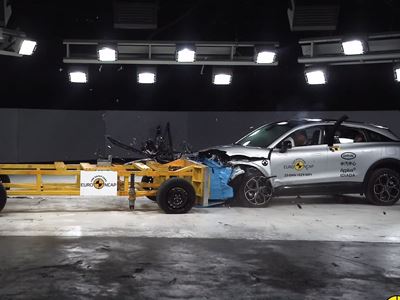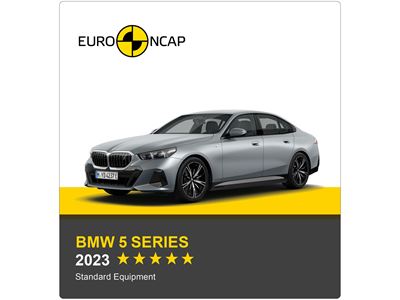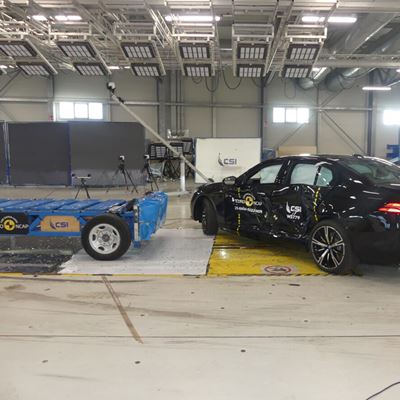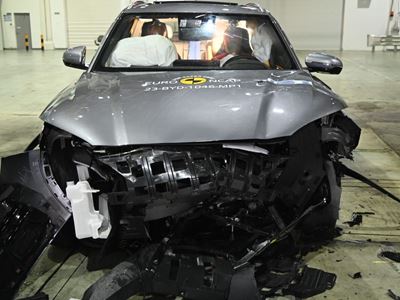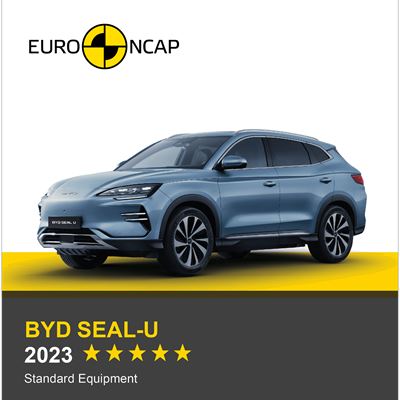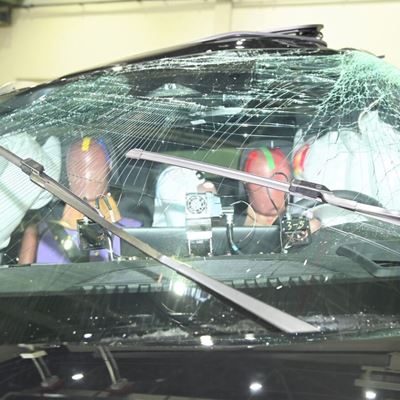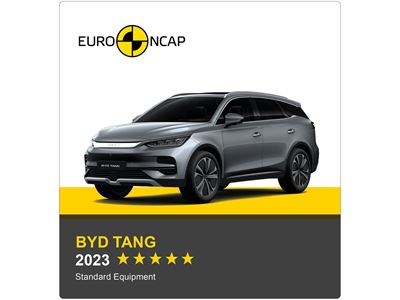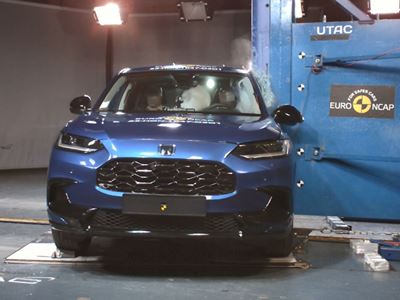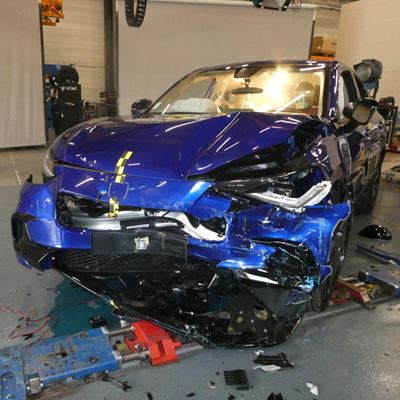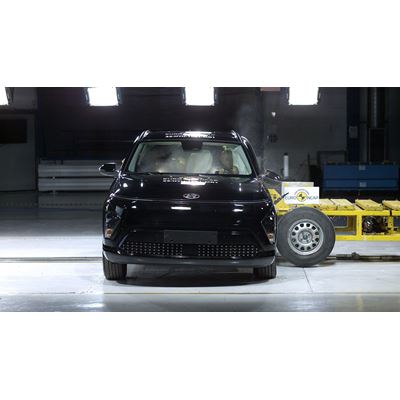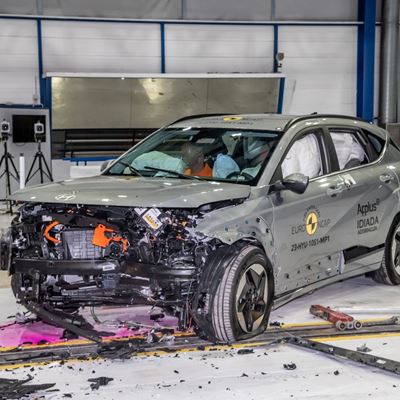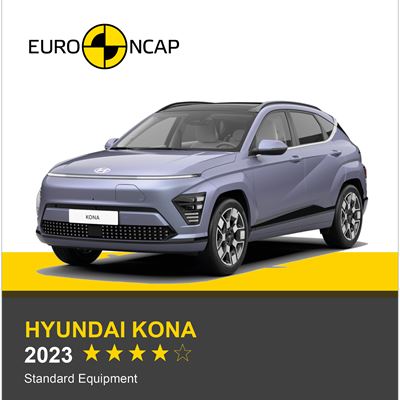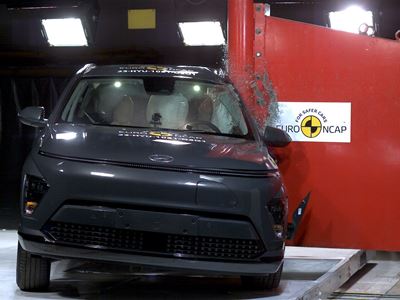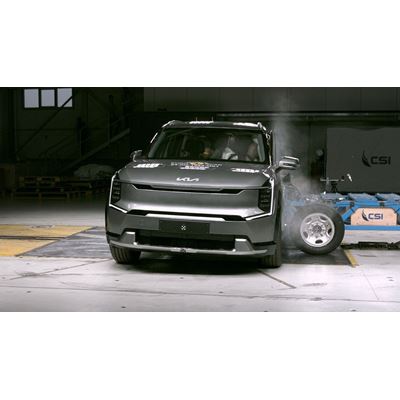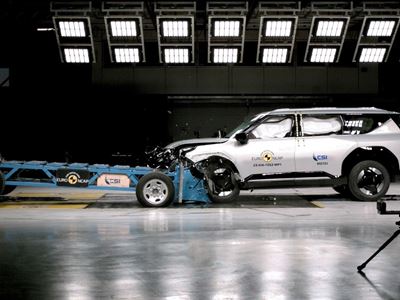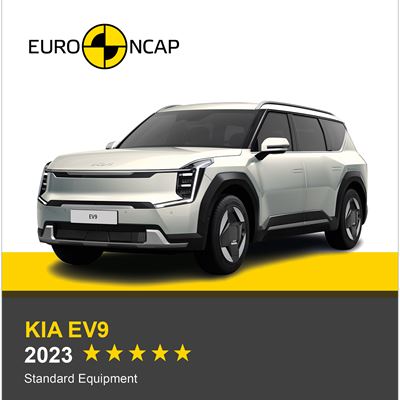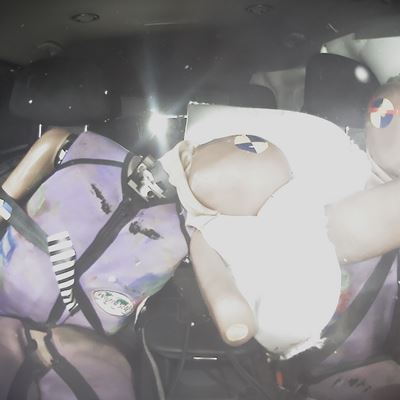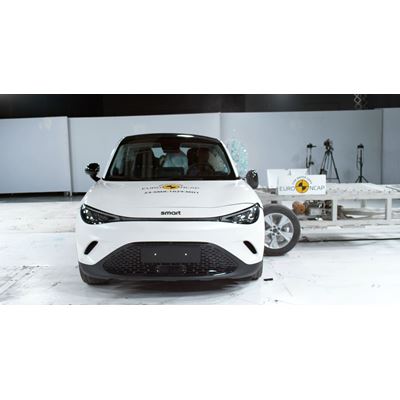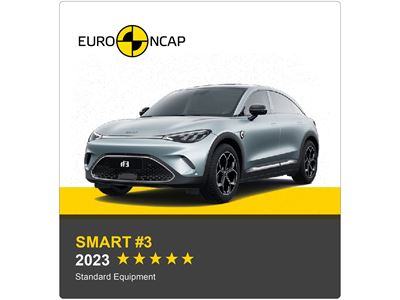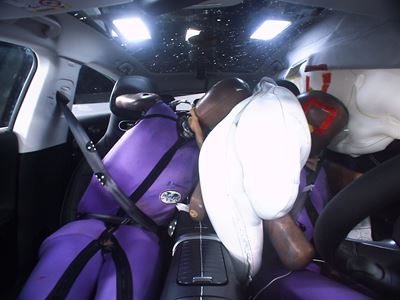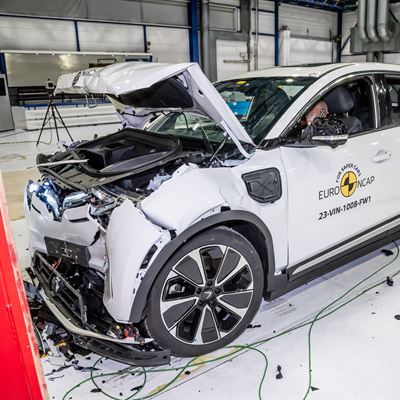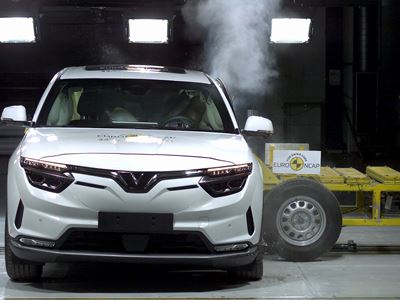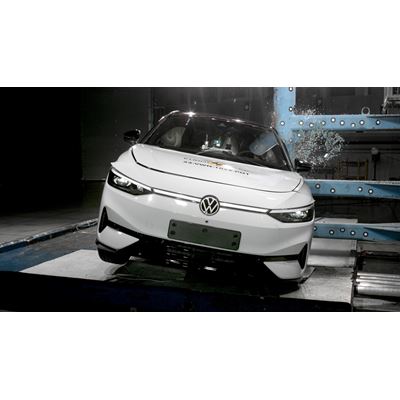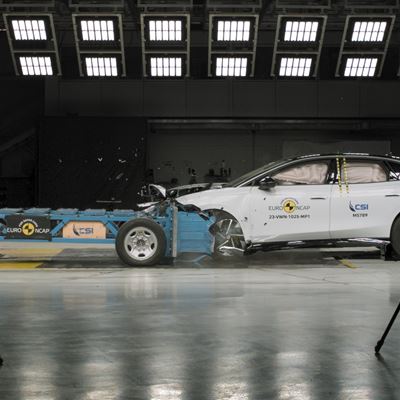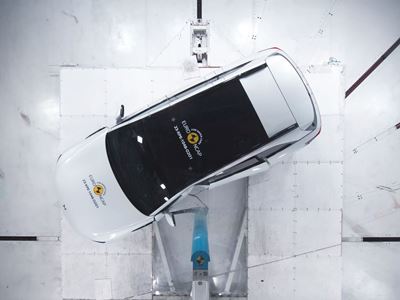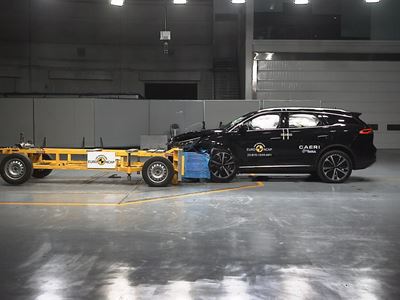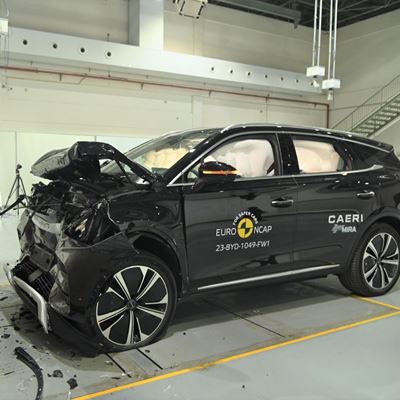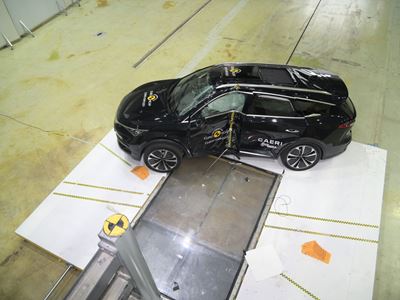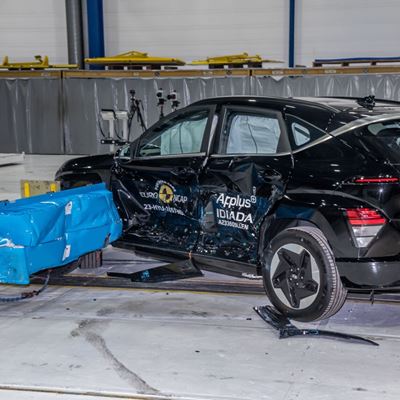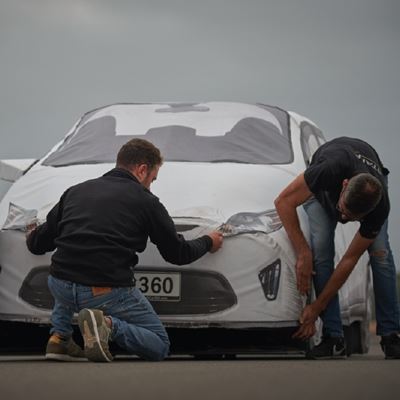Safety must come first as big and bold SUVs continue to hit the market
Today, in its final release of the year, Euro NCAP delivers the safety results of eleven cars: the Volkswagen ID.7, the BMW 5 Series, Mercedes-EQ EQE SUV, BYD TANG, Kia EV9, XPENG G9, VinFast VF8, smart #3, BYD SEAL-U, Honda ZR-V, and the Hyundai KONA. In the context of COP28, it would appear encouraging that the majority of these are EVs, but this release highlights a concerning trend in consumer demand for heavier, more powerful, and taller cars that not only put other drivers at risk but also have an adverse effect on the environment. Of the 11 new cars rated, only three weigh less than two tonnes, and only one, the smart #3, is classified as a small family car. The growing consumer demand for electric vehicles has opened opportunities for new entrants on the European market. Several cars that were tested in 2023 were from Chinese manufacturers anxious to prove their relevance to European buyers. For the first time, the line-up also includes a car from Vietnam. On the positive side, manufacturers, established or new, are responding well to the Euro NCAP requirements that came into effect at the beginning of this year and 8 out of the eleven vehicles received a five-star rating.
For years, Euro NCAP was accused of pushing up the weight of cars. It was thought that additional safety features meant extra mass. That was never really the case and the increase in vehicle weight we see nowadays is certainly not safety-related – it is down to consumer preference for larger vehicles and to electrification, with ever bigger batteries being used to quell consumers’ range anxiety. But this is a trend that helps neither safety nor the environment: big, heavy cars are generally less energy efficient than small, light ones, and there is a safety concern when those two types of vehicles collide or, worse, when vulnerable road users are involved.Dr Michiel van Ratingen, Secretary General Euro NCAP
The Volkswagen ID.7 is a mid-size electric family four-door, similar in size to the now-discontinued Passat, and its stylish look presents an excellent all-round performance in crash safety with a high 95% score in Adult Protection and achieving one of the year’s best overall scores. This car is also a compatible partner on the road, providing not only protection to its own occupants, but also others it might meet on its journey. Slightly smaller than its predecessor, the BMW 5 Series is an appealing choice for consumers in a sector that includes attractive rivals such as Audi A6, the Genesis G80, Jaguar XF, Lexus GS, and Volvo S90. This large family car is right behind the Volkswagen in its safety performance, although not quite as good in pelvic and femur protection in the frontal crash test. Both vehicles achieve a comfortable five-star rating.
The Mercedes-EQ EQE is a hefty electric SUV with a price tag to match but one that achieves an overall very good performance particularly in its safety assistance technologies. The vehicle is let down by the lack of robustness in the car’s centre airbag system, which showed potential head injury for occupants in the front. It scores a five-star rating.
The first Chinese car in Euro NCAP’s December line-up is the BYD TANG, which joins three other cars in BYD’s stable as a five-star performer. BYD has been one of the world’s largest battery producers for many years and a manufacturer of electric cars in China for nearly a decade so, while it is new to Europe the company has a lot of manufacturing experience from which other carmakers can learn. BYD prove they have the measure of safety with a good all-round score and a five-star rating. In this release, Euro NCAP tested the small SUV from BYD, the SEAL-U, which also performs well, with full points for motorcycle AEB. Still heavy at over two tonnes, the car is smaller than most of the other SUV’s tested this time.
Along with the BYD SEAL, the Korean manufactured Kia EV9 is a contender for Car of the Year 2024 and is Kia’s first three-row electric vehicle. In consequence the car is very large, however some would say presents a visual statement on the road. The vehicle comes kitted out with a range of child safety equipment and has a good dynamic performance, achieving a comfortable five-star score.
The XPENG G9 is the second Chinese XPENG Euro NCAP has tested. It received a double five-star rating as it underwent simultaneous safety and Green NCAP testing. In safety testing, the G9 SUV performed well overall, except for the small female driver dummy “submarining” in the full-width test. This allowed the dummy’s pelvis to slip under the lap portion of the belt and suggests higher risk of abdominal injury. Pedestrian head protection was not as good as many of the other cars tested in this release. Nevertheless, the G9 met the requirements for Euro NCAP’s five stars and was also awarded a five-star rating by Green NCAP today.
The smart #3 is also manufactured in China by Geely and this is the second electric SUV made by the company. Larger than previous vehicles made by Smart, there are still some challenges with under-performance in far-side protection and the front seat dummy occupants make contact in testing. The vehicle is not equipped with child presence detection. The vehicle, however, still manages to achieve a safe score of five stars.
The Vietnamese electric vehicle startup VinFast recently launched its first model in the Europe, the two-row, five-seater VF8 SUV, which is the first VinFast Euro NCAP has ever tested. The car achieved a four-star rating, let down by a lack of restraint system robustness but, otherwise, child and vulnerable user protection proved to be good.
Honda’s small SUV the ZR-V is the only car in this release that offers a pure Hybrid powertrain and with its 1.6 tonnes curb weight is the lightest vehicle amongst the cars rated. Its performance in both crash and active safety tests was just below the five-star performance thresholds, resulting in a four-star rating for the ZR-V.
Last placed and the real disappointment in this release is the Hyundai KONA, which scrapes by with four stars, in reality, lucky to avoid three stars. This result is due to its substandard test performance, especially in driver assistance and crash avoidance. Hyundai has made the car larger and its interior bigger to compete within its class, but the company should not assume that its customers are content with a level of safety which lags behind its competitors.
Editor’s note
For full results, visit www.euroncap.com and www.greenncap.com or Euro NCAP's newsroom for journalists.
For media information, please contact Cordelia Wilson at media@euroncap.com.
Follow and share
Facebook
Twitter
Instagram
LinkedIn
YouTube
About Euro NCAP
Euro NCAP organizes crash & safety tests on new vehicles and provides motoring consumers with a realistic and independent assessment of the safety performance of some of the most popular cars sold in Europe. Established in 1997 and backed by several European Governments, motoring, consumer and insurance organizations, Euro NCAP has rapidly become a catalyst for encouraging significant safety improvements to new car design.
Euro NCAP ratings strictly apply to vehicles of the specifications offered in Europe. The ratings do not necessarily apply to models offered in other regions, even when sold under an identical name, as production specification and equipment may vary.
MEDIA
PRESS RELEASE DOWNLOAD
RELATED
- BMW 5 Series - Datasheet 2023
- BYD SEAL-U - Datasheet 2023
- BYD TANG - Datasheet 2023
- Honda ZR-V - Datasheet 2023
- Hyundai KONA - Datasheet 2023
- Kia EV9 - Datasheet 2023
- Mercedes-EQ EQE SUV - Datasheet 2023
- smart #3 - Datasheet 2023
- VinFast VF8 - Datasheet 2023
- VW ID.7 - Datasheet 2023
- XPENG G9 - Datasheet 2023
- Volkswagen ID.7
- BMW 5 Series
- Mercedes-EQ EQE
- BYD TANG
- Kia EV9
- XPENG G9
- VinFast VF8
- smart #3
- BYD SEAL-U
- Honda ZR-V
- Hyundai KONA
- Euro NCAP
- Euro NCAP newsroom
- Five-star rating by Green NCAP
- Euro NCAP | YouTube
- Euro NCAP | LinkedIn
- Euro NCAP | Instagram
- Euro NCAP | X
RELATED
- BMW 5 Series - Datasheet 2023
- BYD SEAL-U - Datasheet 2023
- BYD TANG - Datasheet 2023
- Honda ZR-V - Datasheet 2023
- Hyundai KONA - Datasheet 2023
- Kia EV9 - Datasheet 2023
- Mercedes-EQ EQE SUV - Datasheet 2023
- smart #3 - Datasheet 2023
- VinFast VF8 - Datasheet 2023
- VW ID.7 - Datasheet 2023
- XPENG G9 - Datasheet 2023
- Volkswagen ID.7
- BMW 5 Series
- Mercedes-EQ EQE
- BYD TANG
- Kia EV9
- XPENG G9
- VinFast VF8
- smart #3
- BYD SEAL-U
- Honda ZR-V
- Hyundai KONA
- Euro NCAP
- Euro NCAP newsroom
- Five-star rating by Green NCAP
- Euro NCAP | YouTube
- Euro NCAP | LinkedIn
- Euro NCAP | Instagram
- Euro NCAP | X
CONTACTS
-
Cordelia WilsonMedia AdvisorUnited Kingdommedia@euroncap.com+44 7857 915 964






















